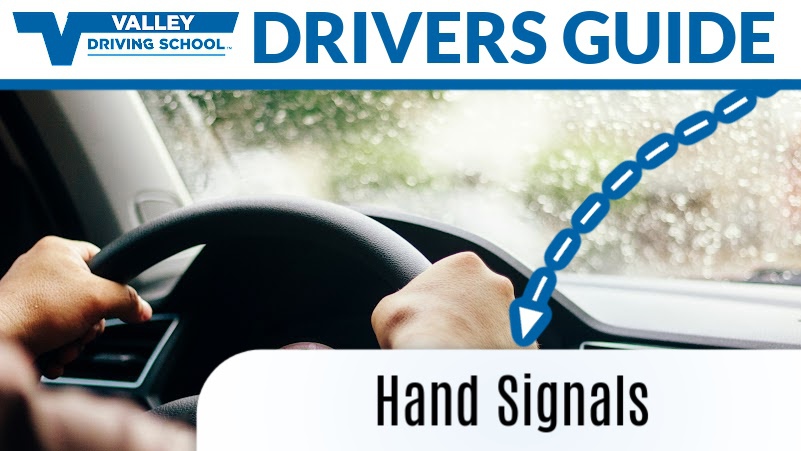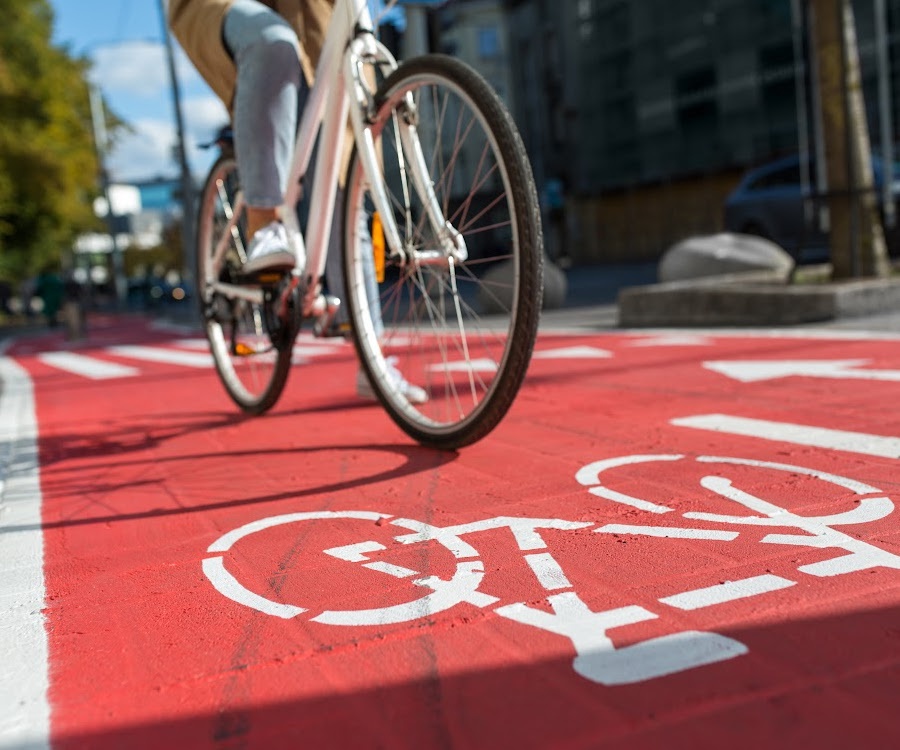Hand signals, although often forgotten in today's age of exterior vehicle lights, are still an important safety feature to know. They serve as a reliable communication tool between road users, especially for cyclists and in situations where car signals may be ineffective or not working.

We’re delving into the importance of hand signals, when and why they should be used, and their significance during the ICBC road test.
What are hand signals?
Hand signals are specific gestures made by drivers using their hands and arms to convey messages to other motorists on the road. These signals, recognized universally, help to communicate intentions and actions in situations where car signals cannot be relied upon. The most commonly used hand signals include a left turn signal, a right turn signal, and a stop signal.

To communicate a left turn signal, road users extend the left arm horizontally, out of the window if you’re driving, ensuring the palm is facing forward. A right turn is shown by extending the left arm out, bending at the elbow with the hand going upward at a 90-degree angle, with the palm facing forward. Stopping is conveyed by extending the left arm out, bending at the elbow with the hand going downward at a 90-degree angle, with the palm facing backward.
If you’re driving a right-hand-drive vehicle, these hand signals should all be done with your right arm extended out the window.
Why would I use hand signals?
While modern vehicles are equipped with turn signals and brake lights, there are circumstances when hand signals become necessary. These include malfunctioning turn signals, limited visibility, and when using the road as a cyclist.
In situations where vehicle signals are not functional, it is vital to rely on hand signals to ensure clear communication with other drivers. Regular pre-trip checks are crucial to identify any burned-out bulbs or faulty signaling systems. By verifying the efficacy of car signals beforehand, drivers can avoid potential hazardous situations.

In heavy traffic or situations where car signals may not be visible to other drivers, hand signals become indispensable. By using clear and well-executed hand signals, drivers can ensure that their intentions are understood by others on the road, reducing the risk of accidents or misunderstandings.
Cyclists rely on hand signals to communicate their intentions clearly on the road. Since bicycles lack turn indicators, these signals help drivers and fellow cyclists anticipate your maneuvers, like stopping or turning. This silent conversation keeps everyone informed and minimizes confusion, leading to a safer ride for all.
How can I practice hand signals?
Clear hand signals prevent misunderstandings and keep everyone in sync when they are used. To make sure you’re using hand signals effectively and can be seen adequately, practice ahead of time. If you have a friend to help out, ask them to stand at a safe distance behind your vehicle and observe your signals from various angles. Adjust your hand position or angle if needed to ensure they're clear.
When practicing hand signals alone, a reflection can be a helpful tool. Station your vehicle near a reflective surface, such as a building window or a mirror, and observe the reflection to determine the visibility and clarity of your hand signals. Adjust your hand position or angle, if necessary, to ensure maximum visibility.
Are hand signals used during an ICBC road test?
Hand signals are likely to be part of an ICBC road test. Although you might not use them regularly on the road, knowing hand signals shows the examiner you understand safe driving practices and can communicate clearly in any situation.

Examiners most often ask for hand signals to be demonstrated at the beginning of a road test, before hitting the road. ICBC wants to make sure that new drivers can effectively communicate with other road users, especially since they will be joining you on the road for a short time. Showing the correct use of hand signals is also part of the ICBC motorcycle road test.
–
Although not used very often, hand signals are an important skill for every road user, serving as a reliable mode of communication in situations where vehicle lights may be malfunctioning or inadequate. By understanding the purpose and proper execution of hand signals, drivers can enhance road safety and effectively communicate their intentions with others on the road.
